 Web Front-end
Web Front-end JS Tutorial
JS Tutorial Do you know the basic development of Ajax? Detailed explanation of the basic development steps of ajax (with examples)
Do you know the basic development of Ajax? Detailed explanation of the basic development steps of ajax (with examples)This article mainly talks about the basic development steps of ajax. If you want to have a deeper understanding of ajax development, you must know the development steps. Although it is the most basic, it can also let people know how to use it. ajax development. Start reading this article now
What is ajax? What is the use?
The full name of Ajax is "Asynchrous Javascript And XML", which refers to a web development technology for creating interactive web applications. It is a technology for quickly creating dynamic web pages to improve the efficiency of interaction between browsers and servers. It can replace the traditional web interaction mode.-
How to understand this synchronization and asynchronousness?
What is the traditional synchronous interaction model?
In the traditional model, the synchronous interaction mode is used. The client browser makes a request to the server, and then waits until the server responds to the request, and cannot perform other operations.
What is the asynchronous interaction model of mainstream technology?
In the Ajax asynchronous interaction mode, there is an additional transfer object Ajax engine between the client browser and the server. When the client browser submits a request to the Ajax engine, the Ajax engine is responsible for transferring the request information to the server. , so that after the client browser sends the request, it can continue the operation instead of being in a waiting state. After the server processes the Ajax engine request, it passes the response to the Ajax engine, and the Ajax engine updates the client browser page. Ajax development steps
Step one: Get the XMLHttpRequest object.
You can find sample code in the xml document of w3school.
var xmlhttp = null;if(window.XMLHttpRequest){ //这个是针对浏览器IE7及其7以上的版。
xmlhttp = new XMLHttpRequest();
}else if(window.ActiveXObject){ //这个是针对浏览器5到7的版本。
xmlhttp = new ActiveXObject("Microsoft.XMLHTTP");
}Step 2: Register the callback function.
xmlhttp.onreadystatechange = function(){
};onreadystatechange is an event handler for events triggered by each state change.
The third step: open("method","URL",async,"uname","pswd")
is only used to set the request method, URL path, and whether to synchronize. No request is sent.
| Parameters | Function |
|---|---|
| method | Send request method, the optional parameters are: GET, POST and PUT. |
| URL | The URL path to be sent, you can use absolute paths and relative paths. |
| async | Whether the request should be processed asynchronously. You can also leave it blank. The default value is true. |
| true, script processing will continue after send() is sent, that is, asynchronous processing. | |
| false, the script will wait for a response before continuing script processing, that is, synchronous processing. | |
| uname | It has not been used yet, and the documentation does not explain it. Just don’t write it. |
| pswd | It has not been used yet, and the documentation does not explain it. Just don’t write it. |
What if the URL requires parameters?
If it is a get request, concatenate the parameters directly after the url.
For example: xmlhttp.open("get","http://www.baidu.com?name=xiaosan");
If it is a post request, multiple setting operations must be performed:
For example: xmlhttp.open("post","http://www.baidu.com");
xmlhttp.setRequestHeader("content-type","application/x-www-form-urlencoded" );
xmlhttp.send("name=xiaosan");
The function of setRequestHeader("label","value") is to add the label/value pair to the http header that you want to be sent.
Step 4: send(content)
Send the request. If there are no parameters, it is written as send(null).
Step 5: Perform specific data operations in the callback function.
Before this, you need to understand some properties of XMLHttpRequest.
| Properties | Description |
|---|---|
| State occurs When it changes, something can be triggered. | |
| See the table below for details | |
| Number return status, such as "OK" is 200, "Not Found" is 404, etc. | |
| String return status, such as "OK", "Not Found", etc. | |
| Return the response as a string. | |
| Returns the response in XML. What is returned is an XML object that can be parsed using DOM |
| represents the status interpretation | |
|---|---|
| Uninitialized state, represents the loading state before the XMLHttpRequest object is created | |
| , open operation. | |
| Loaded status, send operation. | |
| In interactive status, response data has been received, but only the response header and the body have not been received. | |
| Complete status, all http response reception is completed. |
| Parameters | Function |
|---|---|
| method | Send request method, the optional parameters are: GET, POST and PUT. |
| URL | The URL path to be sent, you can use absolute paths and relative paths. |
| async | Whether the request should be processed asynchronously. You can also leave it blank. The default value is true. |
| true, script processing will continue after send() is sent, that is, asynchronous processing. | |
| false, the script will wait for a response before continuing script processing, that is, synchronous processing. | |
| uname | It has not been used yet, and the documentation does not explain it. Just don’t write it. |
| pswd | It has not been used yet, and the documentation does not explain it. Just don’t write it. |
What if the URL requires parameters?
If it is a get request, concatenate the parameters directly after the url.
For example: xmlhttp.open("get","http://www.baidu.com?name=xiaosan");
If it is a post request, multiple settings must be performed:
For example: xmlhttp.open("post","http://www.baidu.com");
xmlhttp.setRequestHeader("content-type","application/x-www-form-urlencoded" );
xmlhttp.send("name=xiaosan");
The function of setRequestHeader("label","value") is to add the label/value pair to the http header that you want to be sent.
Step 4: send(content)
Send the request. If there are no parameters, it is written as send(null).
Step 5: Perform specific data operations in the callback function.
Before this, you need to understand some properties of XMLHttpRequest.
| Properties | Description |
|---|---|
| State occurs When it changes, something can be triggered. | |
| See the table below for details | |
| Number return status, such as "OK" is 200, "Not Found" is 404, etc. | |
| String return status, such as "OK", "Not Found", etc. | |
| Return the response as a string. | |
| Returns the response in XML. What is returned is an XML object, which can be parsed using DOM |
| represents the status interpretation | |
|---|---|
| Uninitialized state, represents the loading state before the XMLHttpRequest object is created | |
| , open operation. | |
| Loaded status, send operation. | |
| In interactive status, response data has been received, but only the response header and the body have not been received. | |
| Complete status, all http response reception is completed. |
AJAX User Manual column to learn). If you have any questions You can leave a message below to ask questions.
The above is the detailed content of Do you know the basic development of Ajax? Detailed explanation of the basic development steps of ajax (with examples). For more information, please follow other related articles on the PHP Chinese website!
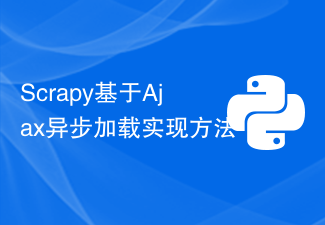 Scrapy基于Ajax异步加载实现方法Jun 22, 2023 pm 11:09 PM
Scrapy基于Ajax异步加载实现方法Jun 22, 2023 pm 11:09 PMScrapy是一个开源的Python爬虫框架,它可以快速高效地从网站上获取数据。然而,很多网站采用了Ajax异步加载技术,使得Scrapy无法直接获取数据。本文将介绍基于Ajax异步加载的Scrapy实现方法。一、Ajax异步加载原理Ajax异步加载:在传统的页面加载方式中,浏览器发送请求到服务器后,必须等待服务器返回响应并将页面全部加载完毕才能进行下一步操
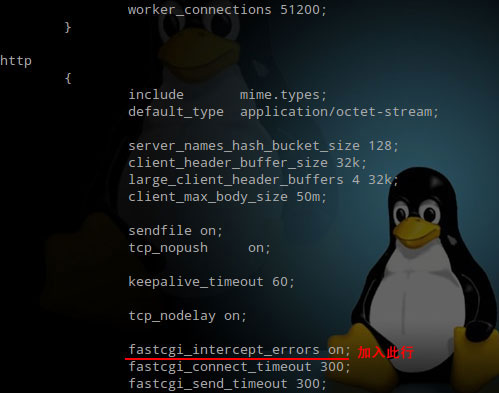 Nginx中404页面怎么配置及AJAX请求返回404页面May 26, 2023 pm 09:47 PM
Nginx中404页面怎么配置及AJAX请求返回404页面May 26, 2023 pm 09:47 PM404页面基础配置404错误是www网站访问容易出现的错误。最常见的出错提示:404notfound。404错误页的设置对网站seo有很大的影响,而设置不当,比如直接转跳主页等,会被搜索引擎降权拔毛。404页面的目的应该是告诉用户:你所请求的页面是不存在的,同时引导用户浏览网站其他页面而不是关掉窗口离去。搜索引擎通过http状态码来识别网页的状态。当搜索引擎获得了一个错误链接时,网站应该返回404状态码,告诉搜索引擎放弃对该链接的索引。而如果返回200或302状态码,搜索引擎就会为该链接建立索引
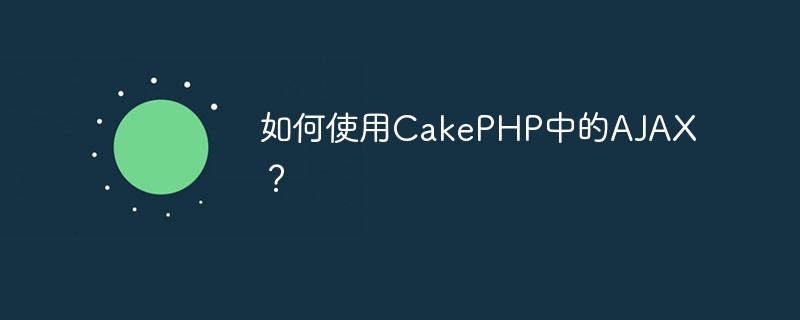 如何使用CakePHP中的AJAX?Jun 04, 2023 pm 08:01 PM
如何使用CakePHP中的AJAX?Jun 04, 2023 pm 08:01 PM作为一种基于MVC模式的PHP框架,CakePHP已成为许多Web开发人员的首选。它的结构简单,易于扩展,而其中的AJAX技术更是让开发变得更加高效。在本文中,将介绍如何使用CakePHP中的AJAX。什么是AJAX?在介绍如何在CakePHP中使用AJAX之前,我们先来了解一下什么是AJAX。AJAX是“异步JavaScript和XML”的缩写,是指一种在
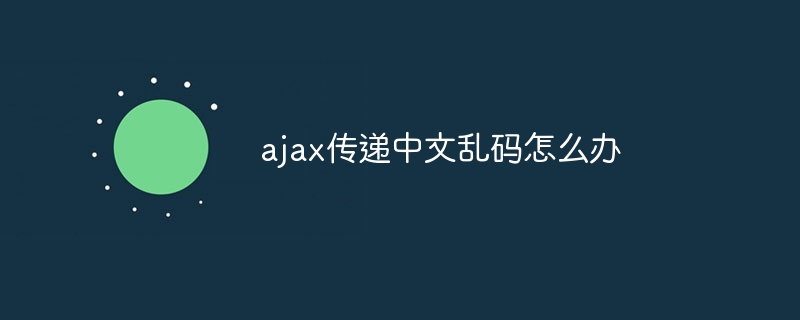 ajax传递中文乱码怎么办Nov 15, 2023 am 10:42 AM
ajax传递中文乱码怎么办Nov 15, 2023 am 10:42 AMajax传递中文乱码的解决办法:1、设置统一的编码方式;2、服务器端编码;3、客户端解码;4、设置HTTP响应头;5、使用JSON格式。详细介绍:1、设置统一的编码方式,确保服务器端和客户端使用相同的编码方式,通常情况下,UTF-8是一种常用的编码方式,因为它可以支持多种语言和字符集;2、服务器端编码,在服务器端,确保将中文数据以正确的编码方式进行编码,再传递给客户端等等。
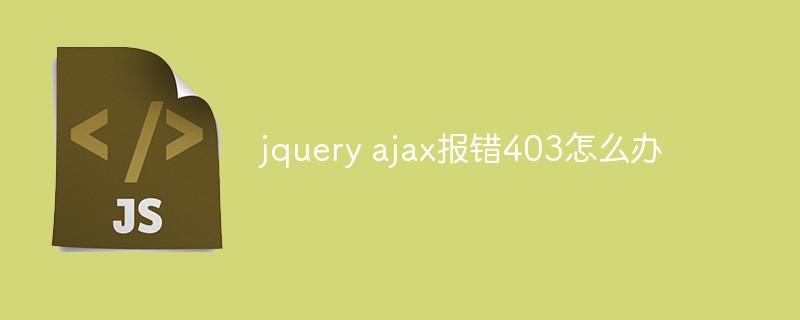 jquery ajax报错403怎么办Nov 30, 2022 am 10:09 AM
jquery ajax报错403怎么办Nov 30, 2022 am 10:09 AMjquery ajax报错403是因为前端和服务器的域名不同而触发了防盗链机制,其解决办法:1、打开相应的代码文件;2、通过“public CorsFilter corsFilter() {...}”方法设置允许的域即可。
 什么是ajax重构Jul 01, 2022 pm 05:12 PM
什么是ajax重构Jul 01, 2022 pm 05:12 PMajax重构指的是在不改变软件现有功能的基础上,通过调整程序代码改善软件的质量、性能,使其程序的设计模式和架构更合理,提高软件的扩展性和维护性;Ajax的实现主要依赖于XMLHttpRequest对象,由于该对象的实例在处理事件完成后就会被销毁,所以在需要调用它的时候就要重新构建。
 使用HTML5文件上传与AJAX和jQuerySep 13, 2023 am 10:09 AM
使用HTML5文件上传与AJAX和jQuerySep 13, 2023 am 10:09 AM当提交表单时,捕获提交过程并尝试运行以下代码片段来上传文件-//File1varmyFile=document.getElementById('fileBox').files[0];varreader=newFileReader();reader.readAsText(file,'UTF-8');reader.onload=myFunc;functionmyFunc(event){ varres
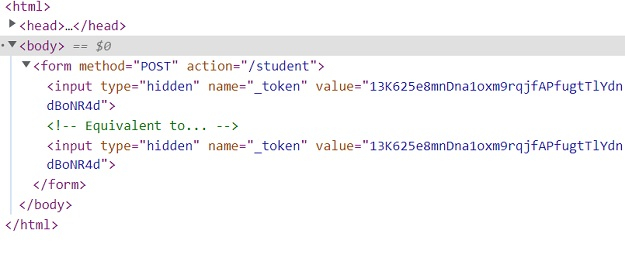 在Laravel中如何通过Ajax请求传递CSRF令牌?Sep 10, 2023 pm 03:09 PM
在Laravel中如何通过Ajax请求传递CSRF令牌?Sep 10, 2023 pm 03:09 PMCSRF代表跨站请求伪造。CSRF是未经授权的用户冒充授权执行的恶意活动。Laravel通过为每个活动用户会话生成csrf令牌来保护此类恶意活动。令牌存储在用户的会话中。如果会话发生变化,它总是会重新生成,因此每个会话都会验证令牌,以确保授权用户正在执行任何任务。以下是访问csrf_token的示例。生成csrf令牌您可以通过两种方式获取令牌。通过使用$request→session()→token()直接使用csrf_token()方法示例<?phpnamespaceApp\Http\C


Hot AI Tools

Undresser.AI Undress
AI-powered app for creating realistic nude photos

AI Clothes Remover
Online AI tool for removing clothes from photos.

Undress AI Tool
Undress images for free

Clothoff.io
AI clothes remover

AI Hentai Generator
Generate AI Hentai for free.

Hot Article

Hot Tools

Safe Exam Browser
Safe Exam Browser is a secure browser environment for taking online exams securely. This software turns any computer into a secure workstation. It controls access to any utility and prevents students from using unauthorized resources.

Notepad++7.3.1
Easy-to-use and free code editor

MantisBT
Mantis is an easy-to-deploy web-based defect tracking tool designed to aid in product defect tracking. It requires PHP, MySQL and a web server. Check out our demo and hosting services.

Dreamweaver CS6
Visual web development tools

ZendStudio 13.5.1 Mac
Powerful PHP integrated development environment





